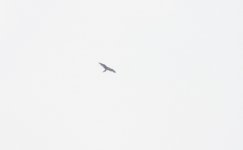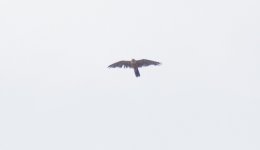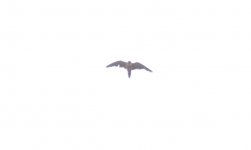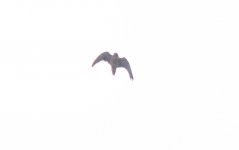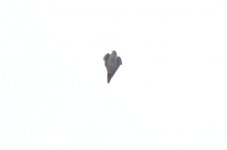I saw a falcon in Addis Ababa for the first time in nearly four years. The problem is figuring out which one! My pictures are terrible, as you can see, due to distance, back lighting, and a very fast falcon. Unfortunately when the bird was closest to me it was in a full on dive, so even with fast shutter speeds there is blurring and a missed opportunity for viewing the underside of the wings.
The speed alone made me think Peregrine at first, but I'm not sure the profile fits as well as some of the smaller hobbies. Of potential importance is the fact that last night we had a large swarm of termites in the area and there is a lot of activity today from other birds (and ants) to try to capitalize on the spoils.
If you can help me with the ID, I'd greatly appreciate it. I have only identified one falcon -- Lanner Falcon -- in Ethiopia thus far.
Justin
The speed alone made me think Peregrine at first, but I'm not sure the profile fits as well as some of the smaller hobbies. Of potential importance is the fact that last night we had a large swarm of termites in the area and there is a lot of activity today from other birds (and ants) to try to capitalize on the spoils.
If you can help me with the ID, I'd greatly appreciate it. I have only identified one falcon -- Lanner Falcon -- in Ethiopia thus far.
Justin




